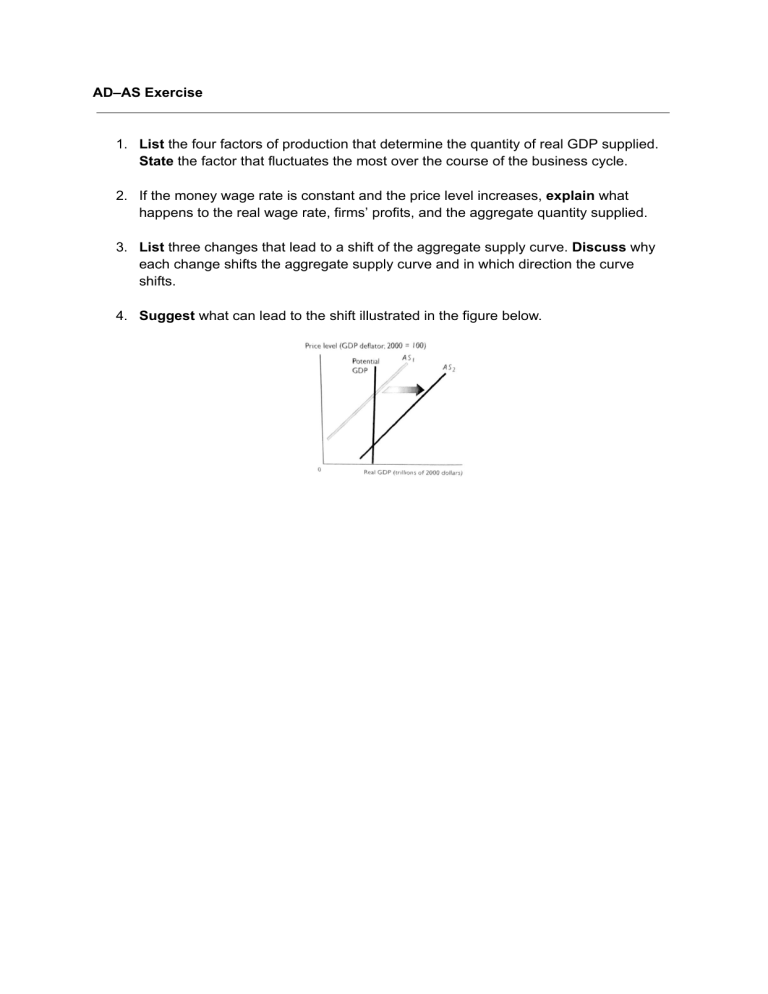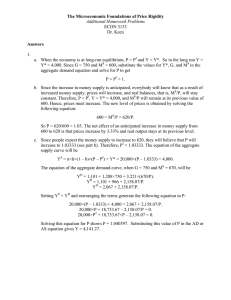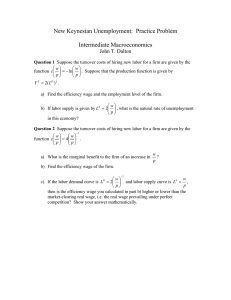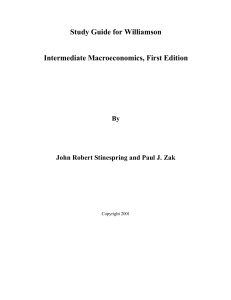
AD–AS Exercise 1. List the four factors of production that determine the quantity of real GDP supplied. State the factor that fluctuates the most over the course of the business cycle. 2. If the money wage rate is constant and the price level increases, explain what happens to the real wage rate, firms’ profits, and the aggregate quantity supplied. 3. List three changes that lead to a shift of the aggregate supply curve. Discuss why each change shifts the aggregate supply curve and in which direction the curve shifts. 4. Suggest what can lead to the shift illustrated in the figure below. Answers: 1. Four factors of production: ● labour — fluctuates the most over the course of the business cycle ● entrepreneurial skills ● capital ● land 2. Real wage rate falls, price level has increased and money wage rates are constant, while real wage rates are lower, firms profit increase. The aggregate quantity of goods and services supplied increases. 3. Productivity / skills; change in input prices / cost of production; price A change in potential GDP, change in money wage rate, and mchange in money prices of other resources. If potential GDP increases (decreases) or money wage rate decreases (increases), or the money prices of other resources decrease (increase), AS increases (decreases) and AS curve shifts rightward (leftward). 4. A decrease in the money wage rate or in the money prices of other resources, such as the price of oil, increase AS and shift the AS curve rightward while not changing potential GDP.




